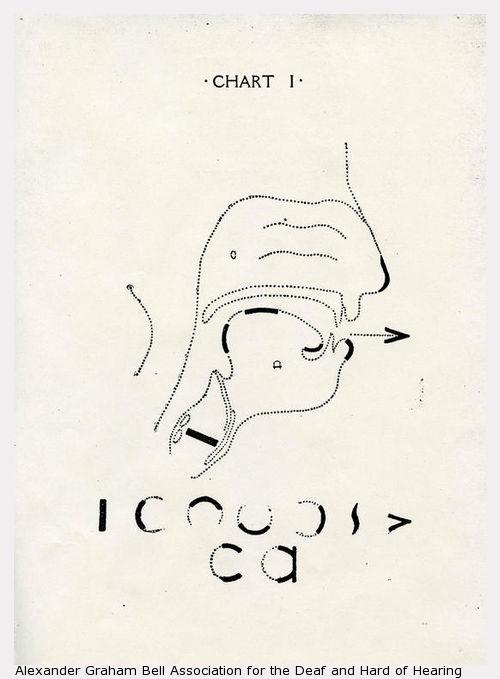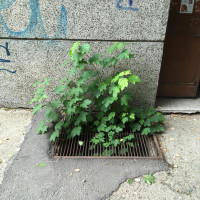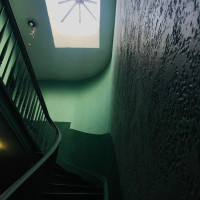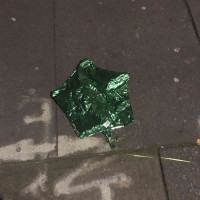Writing
A few selections:
| On the past, which is always present | Los Angeles Review of Books | interview | 2024 |
|
An interview with Tracy Fuad on PORTAL, her new book of poems about the things we inherit—memory, language, culture—and how being in a new place can cast these things into a different relief. |
|||
| On metaphors and memory | Dirt | essay | 2024 |
|
An essay on memory, the mind, and the limits of the brain-computer metaphor. A personal one for me; grateful for the care, trust, and editorial guidance from Daisy Alioto, and first reads from Jessi Haley and Kai Schnier. |
|||
| On secret languages | Spector Books | book essay | 2023 |
|
An essay for D is for Daughter, an artist book by Elina Birkehag that details her project researching and photographing the marks and messages left on the trees by young women shepherds in her hometown of Dalarna, Sweden. From the 17th to the early 20th centuries, young, unmarried women in the area would leave their villages to live and work together on the fäbod (summer farm) and lead their families’ cattle out to graze. While in the pastures, these young women, many of them teenagers, carved the date, their initials, and notes to each other, leaving the trunks scrawled with a kind of teenage freneticism, a coded language, an assertion of their existence: HERE WE DRAW OUR NAMES. I wrote an essay for the reader section of the book, alongside contributions by Amelia Groom & M. Ty, Quinn Latimer, Jungmyung Lee, Matilda Kenttä & Linnea Rutz, and Jennie Tiderman Österberg. “Wood for the Trees: and other things we cannot see” is about secret languages, trees talking, messages hidden in plain sight, and memory work, which is so often women’s work. “Embroidered into clothing, carved into trees, written into decades-old scientific papers, this work might linger on the edges, or be shrouded in innocuousness. It might hide in plain sight until someone is ready to look, the only key needed to break the code. Attention is a crucial precursor of understanding, and to give something your attention you must first see it. The shepherds must have known that too; they often began their messages with SI, meaning ‘look here.’ ” |
|||
| On digital literary magazines | Frieze | article | 2023 |
|
An article about the nascent little world of digital literary magazines and the interactive stories and computational poetry that are meant to exist on the web. Working with both words and code, these writers inventively use the browser as their medium, playing with duration, mutation and possibility. |
|||
| On alt-text and describing the web | The New York Times | feature | 2022 |
|
An interactive piece on alt text, the image descriptions tucked away in a website’s HTML, which people who are blind or have low vision often rely on when navigating the web. There are billions of images online, and only a small fraction of them are accessible in this way. Together with Ilaria Parogni, we talked to the people who are working to change that. |
|||
| On the gender star | Source Type | essay | 2022 |
|
An essay on the evolution of the gender star, an asterisk placed within German nouns to denote gender inclusivity and neutrality. Similarly seen in other languages with gendered nouns, the gender star is a “typohack” (to use a term by designer Hannah Witte) — an imperfect but necessary quick fix as language catches up with cultural and societal change. A radial representative of omission, transition, and change, the asterisk has over time become a kind of symbol for the malleability of language. Accompanied by a visual essay by Mindy Seu and Laura Coombs. |
|||
| On logic and leakage | Automatic Editions | book essay | 2022 |
|
An essay for Coral Saucedo Lomelì’s artist book An Incomplete History of Pierced Vessels, on holes, women, water, sieves, and “fatal formlessness.” The essay, titled “There’s a Logic to this Leakage," was in response to Coral’s beautiful clay vessels — sometimes long and tubular, other times slick and pitted; turned upside down, they became drains, sieves, then sculptures, glazed and stacked like totems, broken into shards or printed onto paper. The book itself is also riddled with holes — what is held is just as important as what is let through. |
|||
| On a set of rules, impossible to follow | Manual.land | liner notes | 2022 |
|
An essay introduction to Mitko Mitkov’s text and sound project MANUAL, a Telegram group-turned-website and, soon, album. |
|||
| On websites, which are never ready | Lerchenfeld | article | 2022 |
|
A write-up for HFBK Hamburg’s Lerchenfeld magazine of the Never Ready conference, held by the Klasse Digitale Grafik. As Konrad Renner puts it, “Change, wanted or not wanted, is a substantial part of working with websites. It’s intrinsic, deeply embedded in the DNA of the medium.” |
|||
| On algorithmic apparitions | The Broadcast | essay | 2021 |
|
For several years, Aarati Akkapeddi has been collecting hundreds of photos from family members, scanning them, and sorting them—a process combining both automation and manual labor—then training a Generative Adversarial Network (GAN) on them to produce a composite of each person’s digital likeness. Inputting several decades’ worth of photos of their mother, for instance, results in a morphing portrait that bears a striking resemblance to the subject, while still seeming to search for her features. Fuzzy and unfixed, a spectre more familiar than accurate, the composite image looks uncannily close to how memory feels. |
|||
| On Ruth Wolf-Rehfeldt | Desired Landscapes | essay | 2021 |
|
"Holes in the Wall" is an essay for Athens-based Desired Landscapes magazine, on Ruth Wolf-Rehfeldt, the "typewritings" that she mailed all around the world from behind the Berlin wall, and growth. Wolf-Rehfeldt believed in a future better than the bordered one she lived in, which is why she made and mailed her artwork, making the wall “full of holes,” to quote curator Valerie Hortolani. |
|||
| On Soft Protest Digest | Mold | interview | 2021 |
|
For Mold’s Urban Ecologies series, an interview with Soft Protest Digest, a research collective founded by Nickie Sigurdsson, Robin Bantigny, and Jérémie Rentien Lando. For the past two years, they’ve been developing “environmentally and culturally resilient” dishes that take into account both the environmental footprint of the ingredients and the food’s cultural resonance. With each of their projects, The Soft Protest Digest shows how a sense of place and connection to the local is essential for forming new food traditions, and why forming new food traditions is so necessary in our current climate crisis. |
|||
| On Karen Blixen’s flowers | Are.na | essay | 2021 |
|
Karen Blixen was a baroness and a Danish author best known for her books Seven Gothic Tales, Out of Africa, and Babette’s Feast. She wrote under the pen name Isak Dinesen, wore ornamental hats and giant fur coats, and was one of the 20th century’s most essential authors, per Margaret Atwood. She was also, apparently, a gardener, as well as a talented, intuitive, somewhat unhinged arranger of flowers. |
|||
| On Aarati Akkapeddi’s memory work | The New York Times | feature | 2021 |
|
A piece for the "Surfacing" column at the Times on artist Aarati Akkapeddi’s work "I know if I walked in your footsteps, it would become a ritual," a series of machine-generated images of their mom, Sudha Akkapeddi. The images are deeply saturated and slid softly out of focus, more painterly than photographic, with a haziness that hints at the elusiveness of memory. I love this memory work that Aarati is doing with GANs, which they relate to the process of remembering—in each case, it's an approximation. |
|||
| On art that dismantles language | Eye on Design | feature | 2021 |
|
In 1967, Robert Smithson wrote in a press release for an exhibition of language-based art (which he famously described as consisting of “Language to be Looked at and/or Things to be Read”) at the Dwan Gallery in New York, “Here language is built up, not written.” Art that dismantles language, isolates it from its meaning, and treats it as object has proliferated ever since. In a non-comprehensive survey of artists who work with typography, I explore how with these works we can defamiliarize ourselves with how language is made and used, and lose ourselves in the letters and the expressive possibilities of language and the many ways it can live in the world. |
|||
| On Christoph Knoth and Konrad Renner | Lerchenfeld | interview | 2020 |
|
For HFBK Hamburg’s Lerchenfeld magazine, an interview with designers Christoph Knoth and Konrad Renner of Knoth & Renner about digital publishing, the handmade web, the unlikely endurance of the PDF, and websites that replicate, then disappear. |
|||
| On The New Women’s Survival Catalog | The New York Times | feature | 2020 |
|
In 1973, Kirsten Grimstad and Susan Rennie quit their jobs, rented a green Plymouth Duster, and drove 12,000 miles across the country to document a nationwide network of feminist alternative culture and resources. They visited feminist bookstores, printers, divorce co-ops, credit unions, dropped in on Rita Mae Brown and Judy Chicago, and in one case, tracked down an agriculture collective in California by asking around for the “women goat farmers with an octagonal barn.” The result is The New Woman’s Survival Catalog, the “feminist Whole Earth Catalog,” which was a bestseller in 1973 that all but disappeared before getting a recent reissue. |
|||
| On Anna Della Subin | The Creative Independent | interview | 2019 |
|
A talk with writer Anna Della Subin on the virtues of idleness, procrastination as its own form of productivity, and the mythological power of sleep. |
|||
| On restaurant websites (and why we’re all going to miss them) | Are.na | interview | 2019 |
|
An interview with Toph Tucker and Jasmine Lee on restaurant websites as the last bastions of personality on the web, the tyranny and possibility of Squarespace, and the unseen labor of restaurant webmasters. Conducted with Laurel Schwulst as the part of a series of interviews hosted in our kitchen. H/t to Leo Shaw for the descriptors. |
|||
| On seeing and being seen | Eye on Design | Essay | 2018 |
|
For Eye on Design issue one, themed Invisible, an essay on Alvin Lustig, who designed blind in his last years of life, and Elaine Lustig Cohen, who served as his eyes and hands before becoming a well-known designer in her own right. “I always say that either I would have remained this shy, unproductive person, or I would have grown up and divorced [Alvin] if he hadn’t died. I don’t know, because the person that I became would have never put up with what I was doing. But we’ll never know.” |
|||
| On Sheila Levrant de Bretteville | Riposte | feature | 2018 |
|
“I’m much more a connector than a resistor. But when push comes to shove, I’m definitely a resistor.” A visit to the circular home of Sheila Levrant de Bretteville to talk about the Woman's Building in L.A., the shortcomings of the second wave, and design pedagogy seeped in activism. For Riposte magazine in London. |
|||
| On spelling spelling | The Serving Library | essay | 2018 |
|
An essay for The Serving Library’s Translation issue on the 19th century attempt to create a universal language by Alexander Melville Bell and the resulting alphabet of cryptic, otherworldly symbols codifying the articulation of speech sounds. Also includes: the Blue Ridge Mountains, Fran Ross’ Oreo, the placelessness of written speech, and the commendable effort to translate all the various "shades of sound."  The Science of Universal Alphabetics by Alexander Melville Bell... |
|||
| On Mierle Laderman Ukeles | Are.na | essay | 2017 |
|
For the Are.na blog, an essay on Mierle Laderman Ukeles, who was an artist-and-resident at New York City’s Department of Sanitation for three decades, on how her work drew a parallel between private domestic work and low-paying public maintenance work. Her Work Ballets, in which excavators, dump trucks, and street sweepers become graceful beings, bowing to commune with the ground, regarding each other curiously, or weaving in-between each other in a choreographed street dance, are some of my favorite pieces of art ever. |
|||
| On the representation of women in movies and books | The Atlantic | feature | 2016 |
|
For The Atlantic, an article that explores how the representation of women in books and films is effected by the gender makeup of the industries that produce them. |
|||


